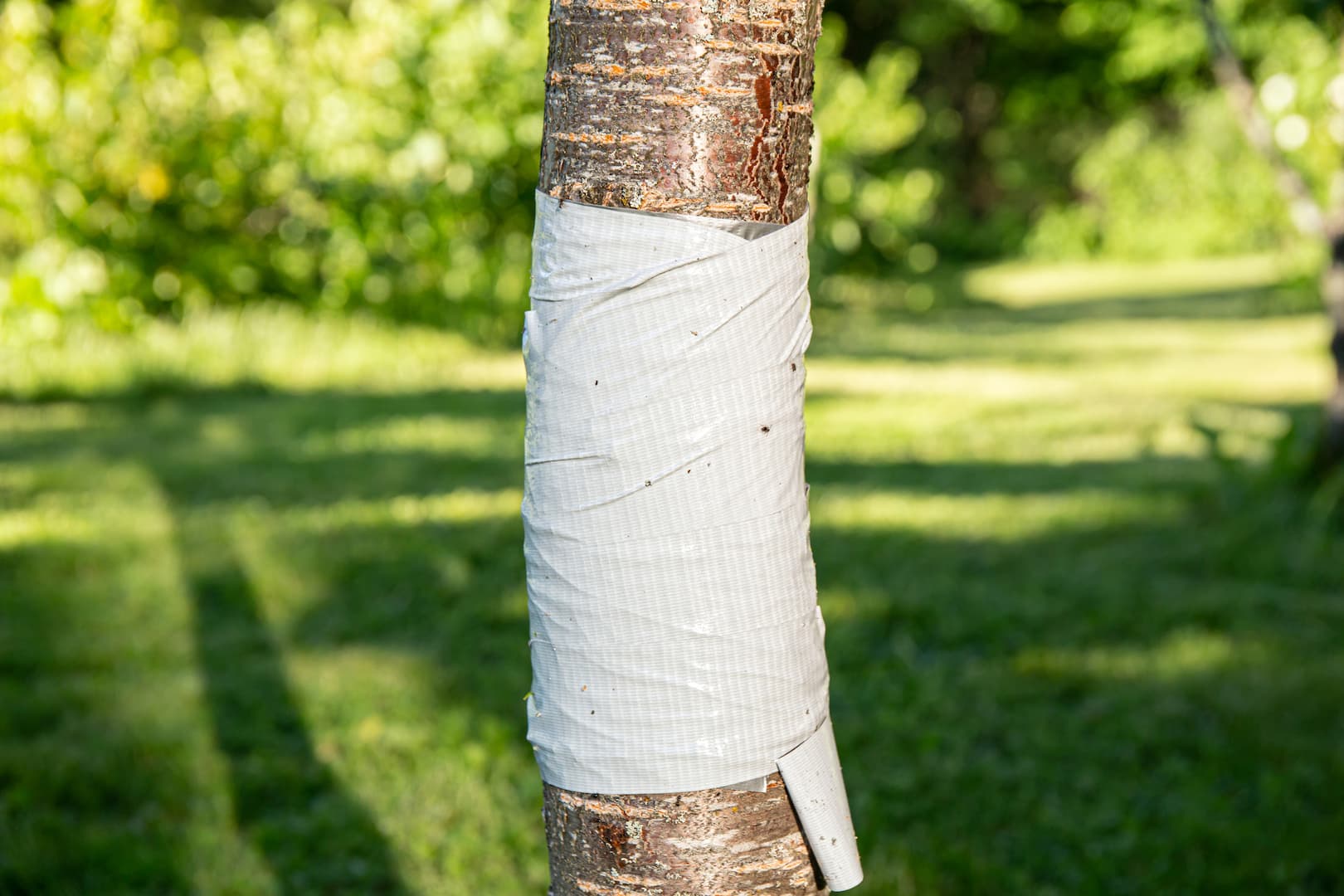What is Duct Tape: Everything You Need To Know About
What is duct tape?
Duct tape is a strong adhesive tape known for its versatility and durability. It is made of a layer of fabric, often cloth or polyester, which is coated with a type of rubberized adhesive. The fabric backing gives duct tape strength and flexibility, while the adhesive allows it to stick to a wide variety of surfaces.
It is commonly silver or gray, but it can be found in various colors and patterns. It is widely used for quick repairs, binding, sealing, and various other applications. The name “duct tape” comes from its original use in heating, ventilation, and air conditioning (HVAC) systems for sealing ducts, but its uses have expanded far beyond that, making it a handy tool in many situations.
What is Duct Tape Used For?
Duct tape is used for a wide range of applications due to its strength, durability, and adhesive properties. Some common uses include:
- Quick Repairs: It is often used for on-the-spot fixes for various items, such as repairing torn bags, fixing broken straps, or mending clothing.
- Sealing and Binding: It is commonly used to seal and bind materials together. Whether it’s sealing boxes, temporarily fixing a leak, or bundling items, It provides a strong and secure hold.
- DIY Projects: It’s popular for various do-it-yourself (DIY) projects. People use it to create wallets, costumes, and even art due to its flexibility and availability in different colors and patterns.
- Emergency Repairs: In emergencies, It can be used to make temporary fixes for things like a broken car hose, a cracked window, or a leaking pipe.
- Outdoor Activities: Campers and outdoor enthusiasts often carry it as a versatile tool. It can be used to repair camping gear, temporarily fix a tent, or even create makeshift solutions in the wilderness.
- Crafts and Hobbies: It is a popular material in crafting and hobby projects. Its adhesive nature makes it useful for creating durable and flexible items.
- Marking and Labeling: Colored duct tape is used for marking or labeling items, organizing spaces, and even creating temporary signage.
- HVAC Repairs: As its name suggests, It was originally designed for sealing and repairing heating, ventilation, and air conditioning (HVAC) systems. It is still used in HVAC applications today.
It’s important to note that while duct tape is incredibly versatile, it may not be the ideal solution for all situations. For more permanent or specialized fixes, other adhesives or materials may be more suitable.
Can Duct Tape be Used as Electrical Tape?
While duct tape and electrical tape share some similarities, they are designed for different purposes, and it’s generally not recommended to use duct tape as a substitute for electrical tape in electrical applications.
Differences between Duct Tape and Electrical Tape
| Electrical Tape | Duct Tape |
| 1. Electrical tape is specifically designed to be an insulating material. It is made to resist the flow of electric current and provide a level of electrical insulation. | 1. Duct taps may not provide the same level of insulation and could pose a safety risk in electrical applications. |
| 2. The adhesive on electrical tape is formulated to work well with electrical wire insulation and to maintain its integrity over time. | 2. Duct tape may not have the same adhesive properties suited for electrical work, and it might degrade faster. |
| 3. Electrical tape is often made to withstand a range of temperatures and environmental conditions. | 3. Duct tape may not have the same durability in terms of withstanding heat, cold, or exposure to moisture. |
| 4. Electrical tape is designed to stretch and conform to irregular shapes, ensuring a tight and secure wrap around wires. | 4. Duct tape may not have the same conformability, making it less effective in tightly wrapping electrical components |
Safety Considerations:
Using duct tape in electrical applications could potentially lead to safety hazards, such as electrical shorts, overheating, or degradation of the tape over time. For electrical work, it’s recommended to use materials that are specifically designed and tested for electrical insulation and safety.
If you need to insulate or repair electrical wiring, it is strongly advised to use proper electrical tape that meets safety standards and is intended for use in electrical applications. Using the right materials ensures the safety and reliability of electrical installations.
How is Duct Tape Made?
It usually has three layers. The top layer you see is plastic called polythene. Below that, there’s a fabric layer in the middle, and the bottom layer is sticky rubber-based glue.
To create duct tape, the fabric gets covered in melted polythene, making it resistant to moisture and damage. The flexible polythene coating lets the tape stick well even on bumpy surfaces.
What makes duct tape special is its fabric layer, giving it strength, yet you can still tear it by hand, unlike some other tapes.
Is Duct Tape Paintable?
Yes, It’s generally paintable, but there are some considerations to keep in mind. While the fabric backing of duct tape can acce
- Surface Preparation: Clean the surface of the duct tape to remove any dust, dirt, or debris. A clean surface will help the paint adhere better.
- Priming: Consider using a primer before applying paint. A primer helps create a smooth and even surface for the paint to adhere to.
- Paint Selection: Use a high-quality paint suitable for the type of surface you are working with. Acrylic or latex paints are often good choices for it.
- Testing: Before painting the entire surface, it’s a good idea to test a small, inconspicuous area to ensure that the paint adheres well and provides the desired finish.
- Thin Coats: Apply thin coats of paint rather than thick layers. Thin coats allow for better adhesion and drying.
- Drying Time: Allow each coat of paint to dry completely before applying additional coats. Follow the paint manufacturer’s recommendations for drying times.
- Sealing: If you want to protect the painted surface, consider applying a clear sealant or varnish after the paint has dried. This can help enhance durability and protect the paint from wear and tear.
Keep in mind that the success of painting it may depend on the specific type of duct tape, its adhesive properties, and the conditions in which it will be used. Additionally, some colors or patterns on the duct tape may still be visible through the paint, so multiple coats may be necessary for full coverage.
Will Duct Tape Damage Car Paint?
Using duct tape on a car’s paint should generally be approached with caution, as there is a risk of damage, particularly if the tape is left on for an extended period or if the car’s paint is sensitive. Here are some considerations:
- Adhesive Residue: Duct tape is known for its strong adhesive. If left on a car’s paint for an extended period or exposed to heat and sunlight, the adhesive may bond strongly to the paint, making it difficult to remove without leaving residue.
- Paint Sensitivity: Some car paints are more sensitive than others. Certain types of automotive paints, especially those with special finishes or clear coats, may be more prone to damage from adhesive substances.
- Heat and Sunlight: Exposure to heat and sunlight can exacerbate the bonding of the adhesive to the car’s paint. In hot weather, the adhesive may become more aggressive, making it harder to remove without causing damage.
- Paint Condition: The overall condition of the car’s paint, including any existing damage or imperfections, can influence how duct tape affects it. Old or damaged paint may be more susceptible to harm.
Tips for Using Duct Tape on a Car:
- Clean Surface: Ensure that the car’s surface is clean and free from dirt or debris before applying it.
- Avoid Prolonged Use: If you need to use duct tape temporarily for a repair or another purpose, avoid leaving it on for an extended period. Prolonged exposure can increase the likelihood of adhesive residue.
- Test in a Small Area: Before applying it to a visible part of the car, test it in a small, inconspicuous area to see how the tape interacts with the paint.
- Remove Carefully: When removing it, do so carefully and slowly. If resistance is felt, stop and use a gentle adhesive remover or warm, soapy water to help release the adhesive.
How Do You Use It?
It’s a versatile tool with numerous potential uses. Here are some common ways to use duct tape:
- Emergency Repairs: It’s renowned for its ability to provide quick and temporary fixes. It can be used to mend a variety of items, from a torn backpack strap to a leaking hose.
- Sealing and Binding: Use duct tape to seal boxes, bind items together, or secure loose parts. It’s handy for temporary fixes or when you need a strong, flexible hold.
- DIY Projects: It’s a popular material for various do-it-yourself (DIY) projects. People create wallets, phone cases, and even clothing items using duct tape due to its flexibility and availability in different colors and patterns.
- Camping and Outdoor Use: Campers often carry duct tape as a versatile tool for outdoor adventures. It can be used to repair tents, gear, and even create makeshift solutions in the wilderness.
- Marking and Labeling: Colored duct tape is useful for marking or labeling items, organizing spaces, or creating temporary signage.
- Securing Cables and Wires: Use it to bundle and secure cables and wires. This helps in organizing and preventing tripping hazards.
- Temporary Fixes for Automotive Issues: It can be used for temporary solutions in automotive emergencies, such as patching a leaking hose or securing a loose bumper.
- Book Binding: In a pinch, duct tape can be used to repair or reinforce the binding of books or notebooks.
- Costume and Prop Making: It’s a popular material in costume and prop making due to its flexibility and ability to hold shapes. It’s often used as a structural element in creating various costume accessories.
- Plumbing Repairs: While not a permanent solution, It can be used temporarily for minor plumbing repairs, such as stopping a small leak.
Remember that while duct tape is versatile, it may not be suitable for all situations or provide permanent solutions. For specific applications, there may be specialized tapes or materials better suited to the task. Always consider safety and the intended use when using duct tape or any other adhesive product.
FAQs
Is Duct Tape Waterproof?
It’s water-resistant, but its level of waterproofing depends on the specific type and brand. It can be effective in temporary fixes for items exposed to moisture, but it may not be a long-term solution for completely waterproofing items.
Can you Paint over Duct Tape?
Yes, It’s paintable. However, it’s important to prepare the surface properly, use the right type of paint, and consider the specific application to ensure a successful and durable result.
How Strong is Duct Tape?
It’s known for its strength, thanks to the fabric backing. While it may not be as strong as some specialized tapes, it provides a good balance of strength and flexibility, making it suitable for a wide range of applications.
Is duct tape heat-resistant?
It’s generally heat-resistant to a certain extent. However, prolonged exposure to high temperatures may affect its adhesive properties. It’s recommended to check the specific product’s specifications for heat resistance.
Can duct tape be used outdoors?
It is suitable for outdoor use, but its effectiveness may vary depending on environmental conditions. For long-term outdoor applications, it’s recommended to use outdoor-rated or weather-resistant.







